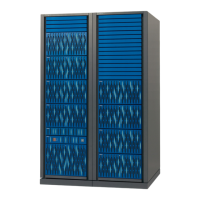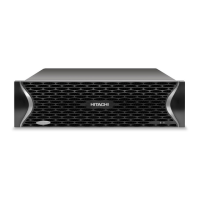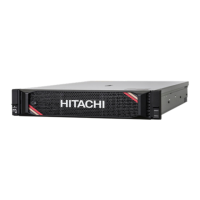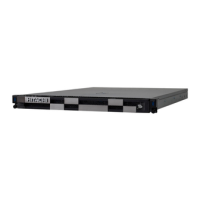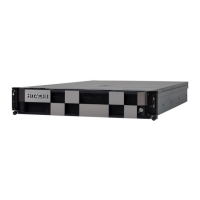Note: This prevents the forcible removal of a volume due to LOG-OFF of
Windows. For example:
C:\HORCM\etc>raidscan -x mount E:\ Volume{cec25efe-d3b8-11d4-
aead-00c00d003b1e}
E:\ <+> HarddiskVolume3
• sync
¢
The synccommand option will also be able to specify a Volume{GUID}
as well as the device object name.
¢
If a Volume{GUID} is specified, then it is executed by converting a
Volume{GUID} to a device object name.
Example:
C:\HORCM\etc>raidscan -x sync Volume{cec25efe-d3b8-11d4-
aead-00c00d003b1e}
[SYNC] Volume{cec25efe-d3b8-11d4-aead-00c00d003b1e}
Host group control
The RAID storage systems have the defined host group in the port and can
allocate a host LU for every host group. CCI does not use this host LU, and
specifies an absolute LUN in the port. To eliminate confusion that LUN of the
CCI notation does not correspond to LUN on the host view and Storage
Navigator, CCI supports specifying a host group and LUN on the host view.
Specifying a host group
(1) Defining the formats
The addition of arguments for the host group to the raidscan command and
the configuration file means that it is not compatible with conventional CLI.
Therefore, CCI provides a way to support CLI by specifying a host group in
the port strings as follows.
• CL1-A-GRP# (GRP# can be up to 127)
Specifying the host group for the raidscan command:
raidscan -p CL1-A-5
Specifying the host group for the configuration file:
#dev_group dev_name port# TargetID LU# MU#
ORA ORA_000 CL2-D-1 4 1 0
ORA ORA_001 CL2-D-1 4 2 0
If the port including a host group is specified to the port name, then a
maximum of 255 LUNs can be specified.
(2) Specifiable port strings
As a result, CCI supports four kinds of forms for the port name.
• Specifying the port name without a host group
8-14
Examples of using CCI commands
Command Control Interface User and Reference Guide

